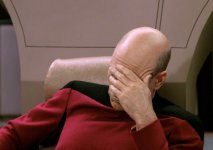lol . . . "crush" is a word that simply doesn't explain what one is trying to explain. It really is a poor word to use as some people will hear that and have a very exaggerated mental image of what that is.
It's a little easier to understand if one says something like ".003 crush" or "006 crush" as it at least gives some idea of what one is trying to do. It really has to do with pushing the anvil into the cup and making its interaction with the primer compound more consistent when the firing pin strikes the primer. It's not about "crushing" the primer's cup itself, it's about the anvil.
And yes, primer manufacturers do recommend a "crush" when seating primers. Though I don't think they recommend how far as it'll depend on the various primer size (but I feel like I have heard they suggest .003"???).
And yes, benchrest shooters do "crush" their primers. . . AND, they're very particular about the strength of their firing pin spring and how consistent it stays for striking the primer.

I like to do .003 to .004" of "crush" when seating and have to do a little calculating how to get that by measuring the primer pockets depths and the height of the primers. That way when I measure how far below flush the primer is, I get a good idea how much "crush" I'm getting.
Precision shooting is ALL about consistency for everything involved.


